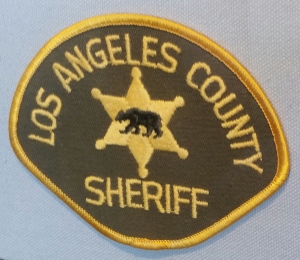If you, a loved one or a family member have been arrested by or are being investigated by the Los Angeles Sheriff’s Department (LAPD), West Hollywood Station, it can overwhelming.
Facing such a situation, it can be calming to know the bail amount (if any) associated with the offense or offenses if police deny an own recognizance (OR) release. It is also valuable to know what evidence is needed to convict one for the crime or crimes that allegedly took place, the defenses possible and the sentence a judge can impose if one is convicted of the crime or crimes.
We at Greg Hill & Associates believe it is further helpful to know a few more things before interacting with any branch of law enforcement. It can be wise to know the size of the police or sheriff’s department, the area’s demographics, the most common types of crimes the department investigates and just a bit about the area’s history to make one’s communication with law enforcement more meaningful, more savvy and perhaps, more respectful. This can lead to a better outcome than if one lacks such perspective.
This article is presented with this goal in mind.
The Los Angeles Sheriff’s Department, West Hollywood Station, is located on North San Vicente Boulevard (780 N. San Vicente) in the City of West Hollywood, between Santa Monica Boulevard and Melrose Avenue.
It is a large station with an unspecified number of sworn police officers and an unspecified number of civilian support personnel assigned to it.
The West Hollywood Station is responsible for patrolling West Hollywood and the unincorporated areas of Universal City Walk.
The City of West Hollywood itself has a population of 35,757 as of the 2020 census.
The city is home to the “Sunset Strip.” To understand how this arose, one must go back in time. For many decades, the area that is now the city of West Hollywood was an unincorporated area in the midst of Los Angeles. Since gambling was illegal in the City of Los Angeles, but still legal in Los Angeles County, the 1920’s saw the proliferation of many casinos, night clubs, etc., along Sunset Boulevard (which starts near downtown Los Angeles and runs westward). These businesses were immune from the sometimes heavy-handed law-enforcement of the Los Angeles Police Department.
Some people connected with moviemaking were attracted to this less-restricted area of the County, and a number of architecturally distinctive apartment buildings and hotels were built. Many interior designers, decorators and "to the trade" furnishing showrooms located in West Hollywood date back to the middle of the century.
Eventually, the area and its extravagant nightclubs fell out of favor. However, the Sunset Strip and its restaurants, saloons, and nightclubs continued to be an attraction for out-of-town tourists. During the late 1960’s, the Sunset Strip was transformed again during the “Hippie” movement which brought a thriving music publishing industry coupled with the "Hippie" culture. Some young people from all over the country flocked to West Hollywood.
The most recent migration to West Hollywood came about after the dissolution of the Soviet Union, when thousands of Russian Jews immigrated to the city. A majority of the 5,000 to 6,000 Russian Jews settled in two major immigration waves, 1978–79 and 1988–92. Other than New York, West Hollywood's Russian-speaking community is the most concentrated single Russian-speaking region in the United States.
Most cases arising out of the Los Angeles Sheriff’s West Hollywood Station’s areas of responsibility are brought at the Van Nuys or the Clara Shortridge Foltz Criminal Courts Building (CCB) at 210 West Temple Street in downtown Los Angeles.
Over the last 25 years, our office has handled perhaps fifty cases arising out the West Hollywood Sheriff’s station and brought at CCB or the Van Nuys courthouse. Such cases vary from DUI to unlawful possession of a controlled substance, to assault, to disabled person parking placard violations (particularly at Universal City Walk), to shoplifting (also at Universal City Walk) to solicitation of prostitution.
One of Greg’s most memorable cases out of West Hollywood was not one of the types of cases listed above. It was a building and safety code case wherein our client operated a dance studio and acting “college” out of a very old building in West Hollywood.
One day, a water main in the building burst and the basement filled up to the ceiling before water then began spilling out to the street. The fire department eventually responded and pumped out the water in the basement. Los Angeles County Housing inspectors then took a look inside the building and found dozens of Building and Safety Code violations.
The City of Los Angeles tried to resolve the issues with our client, who was almost 90 years old. He did nothing in response and so the City filed a criminal complaint against him. The client hired our office to defend him and over the next year, our client methodically upgraded and fixed many of the violations, leading to the case being ultimately dismissed.
Los Angeles Sheriff’s Department, West Hollywood Station
780 N. San Vicente Blvd.
West Hollywood, CA 90069
Los Angeles County
Sergio Aloma, Captain
 (310) 855-8850Non-Emergency Station Calls
(310) 855-8850Non-Emergency Station Calls City of West Hollywood and Universal City Walk.
For more information about being arrested and possibly facing a criminal case, please click on the following articles:
Below is the Google Map to the LASD West Hollywood Station.
